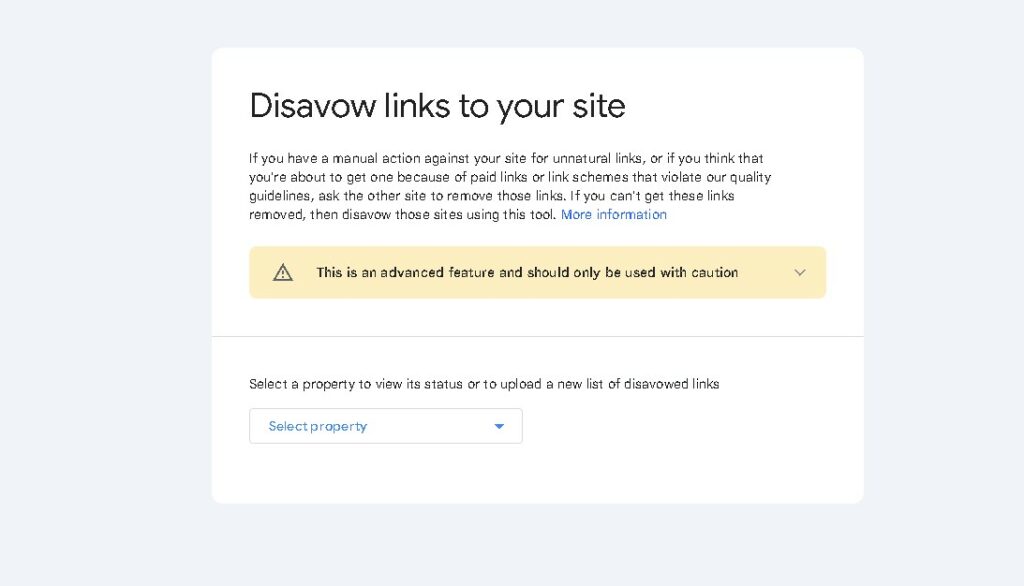Adapting your SEO strategies to Google’s ever-changing algorithms involves keeping yourself informed about these amendments. Websites like Search Engine Land, Moz, and Backlinko offer insightful analysis into these updates, helping you modify your strategy accordingly.
Interestingly, one must remember that it’s not solely about keeping up with the algorithm changes but also meticulously tracking how these updates affect your site’s rank. It’s time to dig deeper into understanding these updates.
Adapting to Google’s algorithm updates involves continuously learning and staying informed about industry news and best practices. It’s essential to conduct regular website audits, focus on content relevance, quality, and user intent, and prioritize technical SEO best practices such as structured data markup and site optimization. By adhering to these principles, you can align your SEO strategy with Google’s evolving algorithms and improve your website’s performance in search results.
Examining Google’s Algorithm Updates

Google regularly updates its search algorithm to deliver more accurate and helpful search results. These updates are designed to enhance the overall quality of search results and improve the user experience. As a website owner or SEO practitioner, it’s essential to stay informed about these changes and understand their implications for your online presence.
The impact of these updates on websites can be significant. For instance, the March 2024 core update aimed to reduce low-quality, unhelpful content in search results by refining ranking systems to better identify webpages that provide a poor user experience or were created solely for search engines. By being aware of these updates, website owners and SEO practitioners can align their strategies with the updated guidelines and ranking factors to ensure that their websites maintain or improve their visibility in search results.
The task may sound daunting, but there are various resources available to help navigate these changes. Websites like Search Engine Land, Moz, and Backlinko provide in-depth analyses and insights into Google’s algorithm updates. These platforms offer valuable information that can assist SEO practitioners in understanding the updates and adjusting their strategies accordingly.
Let’s take a look at an example: Moz provides regular articles and guides that dissect key algorithm changes, offering practical advice on how to adapt and thrive in the evolving landscape of search engine optimization. By staying updated on these insights, website owners can make informed decisions about their SEO approach.
Additionally, Search Engine Land offers comprehensive coverage of algorithm updates, often featuring expert commentary and perspectives on the latest changes. This information enables SEO practitioners to gain a deeper understanding of the rationale behind Google’s updates and the potential implications for their own digital strategies.
It’s clear that staying abreast of Google’s algorithm updates is crucial for maintaining a strong online presence. Let’s now explore how continuous learning and adaptation play a vital role in aligning SEO practices with the updated guidelines and ranking factors.
Now, we’ll delve into the fascinating world of tracking how algorithm updates shift your site’s rank. This insight will shed light on the dynamic nature of search engine optimization and the strategies needed to maintain visibility in search results.
Tracking How Algorithm Updates Shift Your Site’s Rank

When it comes to navigating the ever-evolving landscape of search engine optimization, constant vigilance and adaptability are key. After all, how can you refine your SEO strategy without a clear understanding of how algorithm updates impact your site?
The most effective way to uncover the effects of algorithm updates on your site is by monitoring keyword performance. Tools like Google Search Console, Ahrefs, and SEMrush provide valuable insights into how your site’s keyword rankings are affected by algorithm changes. By tracking these rankings over time, you can identify shifts and fluctuations in your site’s visibility in search results, pinpointing which keywords are driving traffic to your site and where additional optimization efforts may be needed.
For instance, let’s say an algorithm update causes a particular keyword to drop significantly in rankings. This could mean that the update has impacted the relevance or quality of content related to that keyword. By closely monitoring these shifts, you can proactively adjust your content strategy to align with the evolving search landscape.
In addition to monitoring keyword performance, analyzing traffic patterns is another essential aspect of tracking the impact of algorithm updates on your site. By observing traffic shifts and changes in user behavior post-update, you can gauge the overall impact of algorithm changes on organic traffic and user engagement.
Think of it as reading the data-driven story of your site’s performance after each algorithm update. Just as a detective closely examines evidence to solve a case, you carefully analyze traffic patterns to uncover the impact of algorithm changes on user interaction with your site.
Furthermore, tracking competitor performance can provide valuable insights into how algorithm updates are impacting your industry landscape. Assessing how your competitors’ rankings and visibility in search results are affected by algorithm updates offers competitive intelligence. By gaining insights into how others in your industry are adapting to algorithm changes, you can make informed adjustments to your own SEO strategy.
By actively monitoring keyword performance, analyzing traffic patterns, and tracking competitor performance after algorithm updates, you gain actionable insights that allow for strategic adjustments to your SEO approach. This proactive approach not only helps you adapt to the ever-changing SEO environment but also positions you to capitalize on new opportunities presented by algorithm updates. As we wrap up our discussion on staying ahead in the SEO game through vigilant adaptation, let’s now delve into the strategies for adjusting SEO tactics post-Google algorithm changes.
See Related: Is Page Experience a Ranking Factor? How It Impacts Your SEO
Adapting SEO Tactics Post Google Algorithm Changes
When Google updates its algorithms, it’s usually to ensure that users get the best possible search results. This means your SEO strategies need to evolve with these updates. Here are a few essential tactics to consider when adapting to Google’s algorithm changes:
Prioritize Content Relevance

One of the critical aspects of adapting to algorithm changes is prioritizing content relevance. Your content needs to align with the search intent of users. This involves creating high-quality, comprehensive, and relevant content that directly addresses user queries.
It’s not just about stuffing keywords anymore; it’s about providing well-researched and informative content that meets the needs of your audience. By focusing on relevance, you’ll improve your website’s overall user experience and increase the likelihood of ranking well on search engine results pages (SERPs).
Optimize User Experience

Another crucial aspect of post-algorithm change SEO tactics is optimizing the user experience. This includes enhancing your website’s speed, ensuring mobile-friendliness, improving navigation, and overall usability.
By making these improvements, you align with the intent of Google’s algorithm updates, which prioritize websites that provide an optimal user experience. A seamless user experience not only satisfies visitors but also communicates to search engines that your site is valuable and trustworthy.
Technical SEO Optimization

In addition to content and user experience, technical SEO optimization plays a vital role in adapting to algorithm changes. This entails implementing structured data markup, optimizing site architecture, and ensuring the proper use of canonical tags.
These technical improvements make your website more search engine-friendly and help search crawlers understand and index your content more effectively. By focusing on technical aspects, you can enhance your website’s visibility and accessibility in search results.
Adapting to Google’s algorithm changes requires a holistic approach that encompasses relevance, user experience, and technical optimization. By staying attentive to these essential SEO strategies post-algorithm updates, you can position your website for success amidst evolving search engine dynamics. With the ever-changing landscape of search engine algorithms and ranking factors at play, let’s now shift our focus towards navigating an equally critical aspect of SEO strategy—the mitigation of penalties imposed by Google.
See Related: How to Refresh Content for SEO: A Guide to Content Strategy
Mitigating Google’s Penalties
When it comes to Search Engine Optimization (SEO), adhering to Google’s rules and avoiding spammy or manipulative practices is crucial. Failure to comply with these guidelines can lead to penalties that severely impact your website’s visibility in search results.
To prevent such repercussions, regular website audits are essential. These audits should aim to identify and rectify issues such as low-quality content, unnatural links, and thin or duplicate content.
Low-Quality Content and Unnatural Links

Low-quality content can harm your site’s ranking as Google algorithm updates prioritize high-quality, relevant content. Content that lacks depth, originality, or relevance may be flagged as low quality, impacting the overall authority of your website.
Additionally, unnatural and toxic backlinks from disreputable sources can result in penalties that hinder your site’s performance. It’s critical to use tools like Google’s Disavow Tool to address and disassociate from such harmful backlinks.
Responsible Utilization of the Disavow Tool

Utilizing the Disavow Tool requires a strategic and thoughtful approach. It involves signaling to Google which backlinks you’d like to disassociate from your website.
This process helps ensure that your site isn’t penalized for having unnatural or harmful backlinks. However, it’s crucial to exercise caution when using this tool, as improper disavowal of genuine, beneficial links can also impact your SEO efforts negatively.
Addressing Thin or Duplicate Content

In addition to content and link audits, addressing thin or duplicate content is vital for maintaining a healthy website. Thin content refers to pages with little substantive value, while duplicate content can occur within your own site or be copied from external sources. Both instances can trigger penalties and impact your site’s ranking and credibility.
Mitigating Google penalties requires a proactive and comprehensive approach. By taking the necessary steps to comply with webmaster guidelines, conducting regular audits for issues related to content and backlinks, and leveraging tools like the Disavow Tool responsibly, you can safeguard your website against potential penalties and maintain its visibility and authority in search results. As the digital landscape continues to evolve, sustaining long-term resilience against algorithm shifts becomes imperative for businesses seeking sustained online success.
Sustaining Long-Term Resilience Against Algorithm Shifts

As the digital landscape continues to evolve, building resilience against algorithm shifts becomes paramount for consistent visibility in search results. One approach to achieve this is by establishing and showcasing expertise, authoritativeness, and trustworthiness (E-A-T) in the content, site contributors, and overall website presentation.
To achieve this, content creators must focus on providing comprehensive, well-researched information that addresses user intent effectively. Transparent authorship information is crucial as it allows users to identify the creators behind the content, enhancing trust and accountability.
Citing reputable sources and exhibiting relevant credentials also contributes significantly to establishing E-A-T. When users can see where the information comes from and verify its authenticity, it bolsters the credibility of the content.
Furthermore, showcasing expertise can involve highlighting the backgrounds and qualifications of content creators and contributors. This helps users recognize the proficiency of the individuals sharing the information. For instance, if an article on a medical topic is authored by a renowned doctor with extensive experience, it adds weight to the site’s authority on health-related matters.
Imagine searching for health-related advice and coming across two articles. The first one is authored by an experienced medical professional, cites reputable medical journals, and provides clear authorship details.
The second article lacks clear authorship information and doesn’t reference any credible sources. Which one would you trust? This scenario underscores the importance of E-A-T in building credibility.
Alongside building E-A-T, website owners must prioritize security measures by implementing HTTPS encryption, protecting user data, and ensuring site privacy. This aligns closely with Google’s emphasis on security and privacy in the wake of algorithm updates. By adopting these measures, websites demonstrate their commitment to safeguarding user information, which is essential for creating a trustworthy online environment.
Implementing HTTPS encryption not only secures data transfers between users and websites but also enhances site credibility by displaying a padlock icon in the address bar. Additionally, maintaining user privacy through clear privacy policies and practices further contributes to building user trust. When visitors feel confident that their information is secure and their privacy is respected, they are more likely to engage with the website.
Consider a scenario where a user lands on an e-commerce website to make a purchase. If the site displays a padlock icon in the address bar and transparently communicates its commitment to protecting user data through a privacy policy link in the footer, it reassures the user about the security of their personal information.
The integration of E-A-T principles and robust security measures lays a solid foundation for websites to navigate algorithm shifts effectively while building trust with users. Moving forward with our quest for SEO mastery, let’s now shift our focus to reviewing vital strategies for adapting to future algorithm updates.
See Related: What is Information Gain? Concepts for SEO Content Creation
Reviewing SEO Strategies for Future Updates

In a landscape as dynamic as online search, staying ahead of the game is crucial. As we adjust to Google’s algorithm updates, it’s essential to remain informed and responsive to emerging changes.
This requires a proactive approach that involves constant vigilance and readiness to adapt to shifts in content quality standards, user intent, and technical SEO best practices. Let’s explore a few vital strategies to ensure you’re well-positioned for any future algorithm updates.
Remaining abreast of industry news sources, blogs, and insights from reputable SEO experts is paramount. Actively monitoring these channels allows you to stay informed about potential algorithm updates, shifts in ranking factors, and emerging best practices. Moreover, frequent exposure to diverse perspectives can provide a more comprehensive understanding of the evolving landscape, enabling you to make informed decisions that align with current trends and future forecasts.
Regularly evaluating SEO strategies is essential not only to uphold your website’s performance but also to capitalize on opportunities presented by new updates. By continuously reassessing tactics and adapting them in line with changing requirements, you maintain an agile approach that positions you well for sustained success amidst the fluidity of search engine algorithms.
For instance, ongoing assessments of your website’s performance metrics can reveal areas that need adjustment to align with new algorithm updates. If specific pages experience a drop in rankings or visibility following an update, it may signal the need for modifications related to content quality or technical SEO elements. This data-driven process empowers you to make well-informed decisions that positively impact your site’s standing.
Conducting regular website audits serves as an integral component of this adaptive strategy. By scrutinizing various aspects such as keyword optimization, backlink profiles, mobile-friendliness, and page speed among others, you gain insights into areas requiring refinement. These audits enable you to identify potential weak spots and proactively address them before they become detrimental to your site’s SEO performance.
In summary, staying attuned to industry developments and ensuring continuous alignment with evolving content quality standards, user intent, and technical SEO best practices are fundamental elements of effective SEO strategy review. Embracing a mindset of adaptability and resilience positions your website favorably for future algorithm updates, empowering sustained growth and relevance in the ever-evolving digital landscape.
Related Resources

